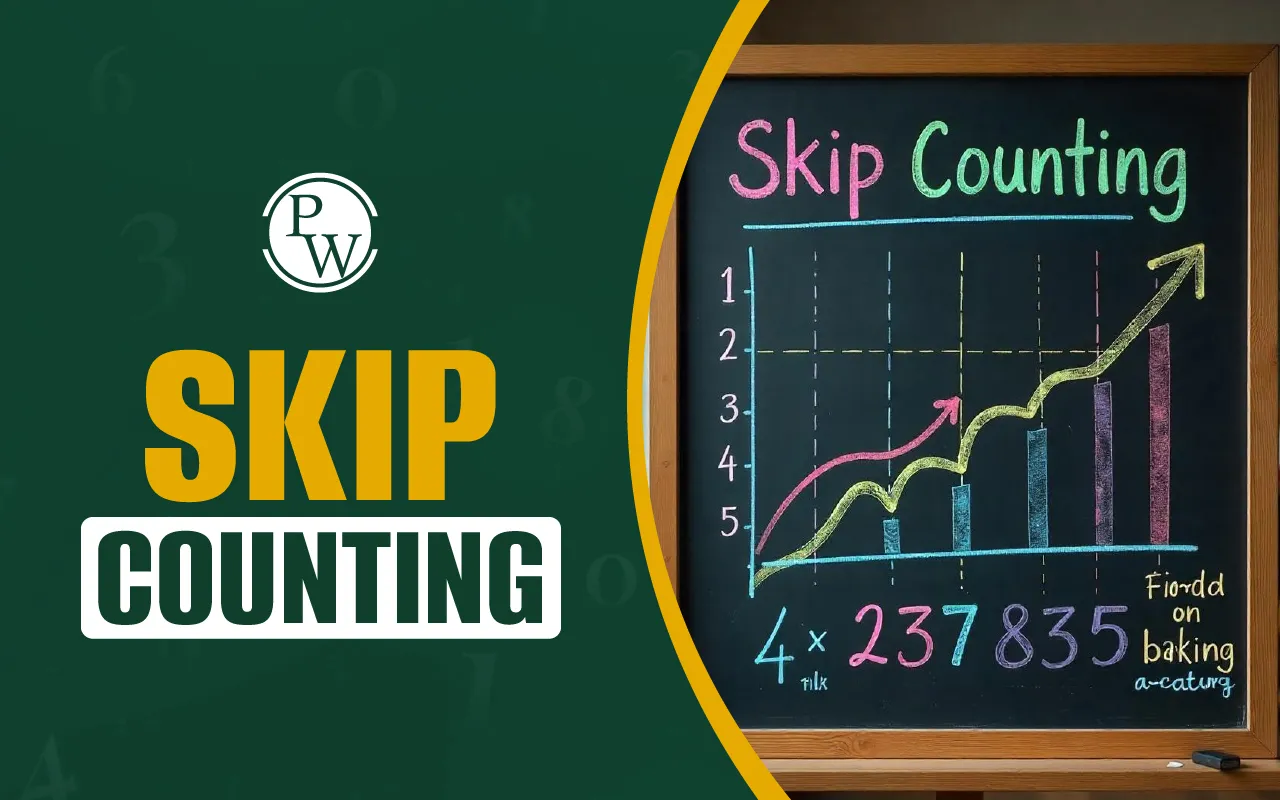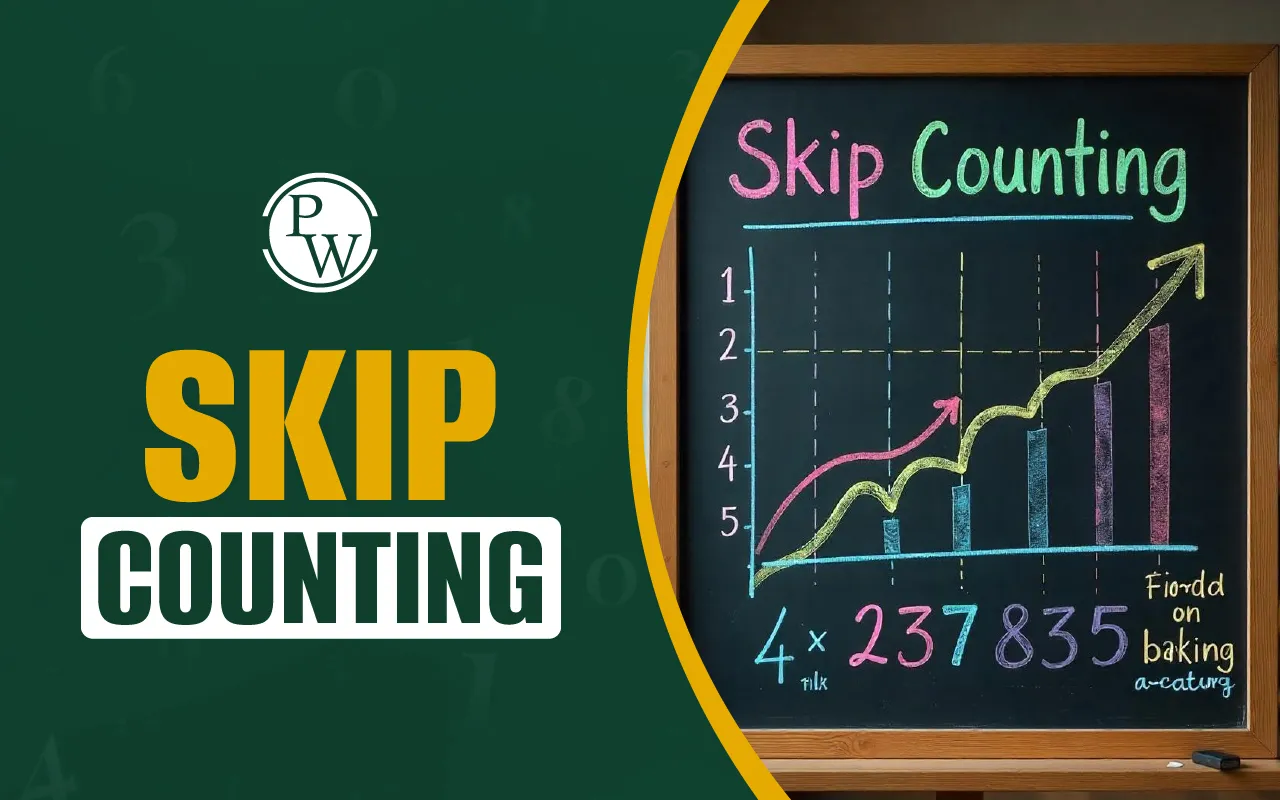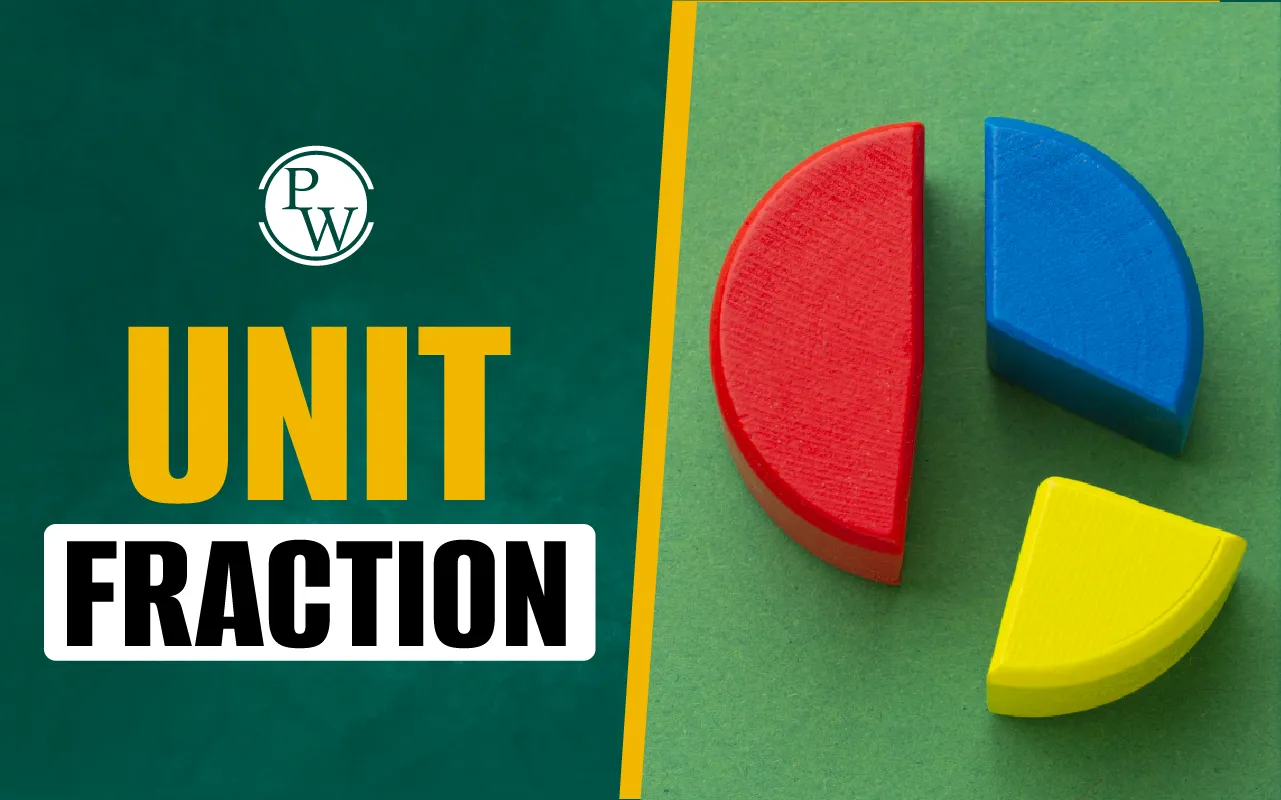

Skip counting is a way of counting by jumping numbers over equal intervals instead of going one by one. As the clock's minute hand passes the different digits, we tell the time as 5, 10, 15 minutes, etc. That's skip counting! Here we are skipping the counting by 5.
Similarly, while counting multiple 100-rupee notes, we count as 100, 200, 300…and so on. Getting a clear idea of skip counting helps remember the multiplication tables and the number patterns, which makes mathematical calculations quicker and more intuitive.
Read More - Number Name 1 to 20
What is Skip Counting?
Skip counting is counting forward by skipping a particular number in the sequence. In other words, it uses numbers in counting that are not consecutive numbers but differ from the previous number by more than 1.
For example, skip counting by 6 means we count every 6th number starting from a particular number. If we start from 6, the counting sequence will be 6, 12, 18, 24, 30, 36, 42, and so on.
Skip Counting by Addition or Subtraction
Skip counting also involves adding or subtracting a specific number to the previous number to get the next number in the counting sequence. This particular number is the same by which we skip the counting.
For example, to skip counting by 4, we keep adding 4 to the previous counting numbers. So, if we start from 0, the next number in the sequence will be 0 + 4 = 4, 4 + 4 = 8, 8 + 4 =12, and so on.
It means, skipping counting by 4 gives counting numbers as 0, 4, 8, 12, 16, 20 …
Similarly, while back counting, we subtract 4 from the previous number. If we skip counting by 4 backwards by starting from 28, we get the numbers as 28, 24, 20, 16, 12, 8, 4, 0, -4, -8… and so on.
Read More - Even Numbers
Skip Counting by 2
Skip counting by 2 means we keep taking every 2nd number starting from zero. So, we get the numbers by adding 2 to the previous number in each counting step. It means in skip counting by 2, we get the numbers as follows:
0
0 +2 = 2
2 + 2 = 4
4 + 2 = 6
6 +2 = 8
8 + 2 = 10 and so on.
So, when we skip count by 2, we get the numbers 0, 2, 4, 6, 8, 10…
Skip Counting by 3
Skip counting by 3 means we keep taking every 3rd number starting from zero. So, we get the numbers by adding 3 to the previous number in each counting step. It means in skip counting by 3, we get the numbers as follows:
0
0 + 3 = 3
3 + 3 = 6
6 + 3 = 9
9 + 3 = 12
12 + 3 = 15 and so on.
So, skipping counting by 3 gives a series of numbers 0, 3, 6, 9, 12, 15…
Read More - Odd Numbers
Skip Counting by 5
Skip counting by 5 means we keep taking every 5th number starting from zero. So, we get the numbers by adding 5 to the previous number in each counting step. It means in skip counting by 5, we get the numbers as follows:
0
0 + 5 = 5
5 + 5 = 10
10 + 5 = 15
15 +5 = 20
20 + 5 = 25 and so on.
So, skip counting by 5 gives us numbers like 0, 5, 10, 15, 20, 25…
Read More - Table of 5
Application of Skip Counting in Multiplication
The primary use of skip counting is in multiplication tables. For the multiplication table of a particular number, we use skip counting by that specific number to get the correct multiple values.
For example, for a multiplication table of 12, we use skip counting by 12 starting from 12 to get the different multiples of 12.
It is explained as follows.
12 x 1 =12
12 x 2 = 24 = (12 + 12)
12 x 3 = 36 = (24 + 12)
12 x 4 = 48 = (36 + 12)
12 x 5 = 60 = (48 + 12)
12 x 6 = 72 = (60 + 12)
12 x 7 = 84 = (72 + 12)
12 x 8 = 96 = (84 + 12)
12 x 9 = 108 = (96 + 12)
12 x 10 = 120 = (108 + 12)
In other words, if we start from a particular number and skip count by the same number, we get all the multiples of that number.
Read More - Table of 12
Skip Counting Using Number Line
We can skip counting on the number line following some basic rules. We skip counting by 3 starting from zero. Then, we will skip two numbers in each step to get the next number in the series.
So, the second number is obtained by skipping 1 and 2. We get the number 3. Again, starting from 3, we skip 4 and 5 and get 6. The next number will be 9, by skipping 7 and 8.
Read More - Table of 3
Skip Counting Solved Examples
1. Find the missing numbers in the series for skip counting by 7.
1, 8, 15, __(a)__, 29, __(b)__, 43, 50
Solution:
The series numbers are obtained by adding 7 to the previous number.
So, the missing numbers will be: a = 15 + 7= 22 and b = 29 + 7 = 36.
2. If we skip count by 4 starting from -2, how many times do we have to count to get the number 22?
Solution:
Starting from -2, skip counting by 4 gives us the series of numbers as follows:
-2, 2, 6, 10, 14, 18, 22
So, we have to count 7 times to get the number 22.
3. Using skip counting, find the 5th multiple of 9.
Solution:
1st multiple of 9 = 9 x 1 =9
2nd multiple of 9 = 9 x 2 = 9 + 9 =18
3rd multiple of 9 = 9 x 3 = 18 + 9 = 27
4th multiple of 9 = 9 x 4 = 27 + 9 = 36
5th multiple of 9 = 9 x 5 = 36 + 9 = 45
So, the 5th multiple of 9 is 45.
4. What are the first 8 numbers obtained by backward skip counting by 15, starting from 75?
Solution:
We start backward counting by 15, starting from 75.
So, we have to subtract 15 in each step to get the next number.
So, the first 8 numbers in this sequence will be:
75
75 – 15 = 60
60 -15 = 45
45 -15 = 30
30 -15 = 15
15 -15 = 0
0 – 15 = -15
-15 -15 = -30
So, the first 8 numbers in this series are 75, 60, 45, 30, 15, 0, -15, -30.
Help your child excel in math with CuriousJr maths online classes .Our personalized lessons are designed to keep your child engaged and motivated. Enroll today and watch your child improve their math skills!













